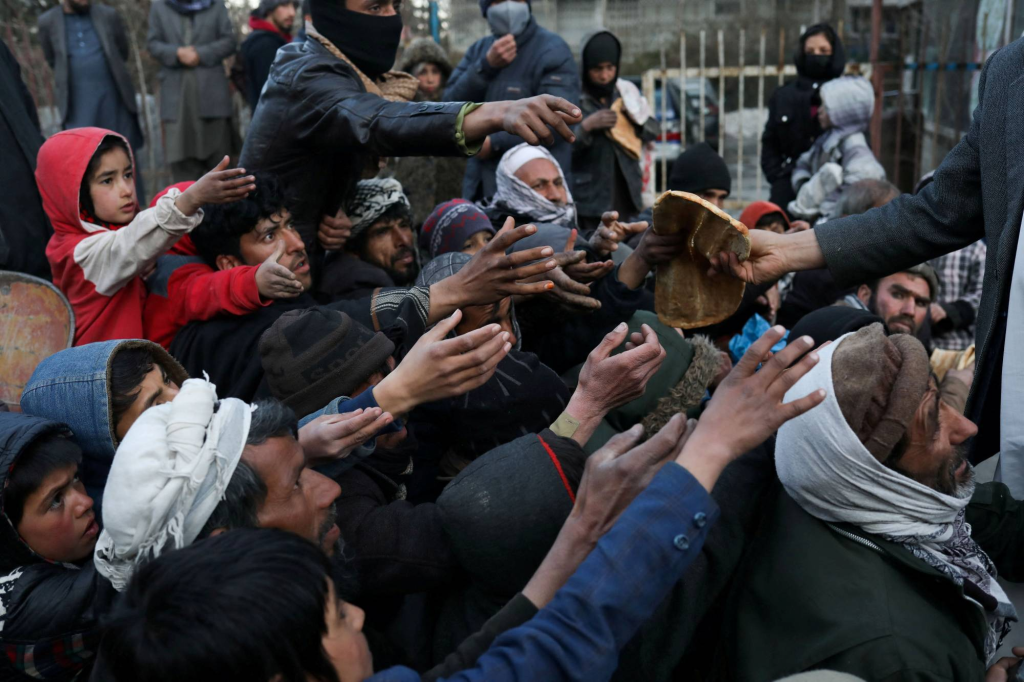Afghanistan’s Humanitarian Crisis; How Close to Catastrophe?
By Ahmad Reza Nevisa
DIDPress: Famine and hunger, coupled with the collapse of healthcare services, threaten to spike mortality rates and trigger mass displacement. Escalating natural disasters—especially drought—could displace 5 to 10 million people, a scenario that risks destabilizing not only Afghanistan but the entire region.

Afghanistan, a land scarred by decades of war and instability, is now gripped by a deepening humanitarian crisis. Recent United Nations reports, including a stark warning from Andrika Ratwatte, Deputy Special Representative of the UN Secretary-General, underscore the severity of the situation.
Ratwatte emphasized that the window to avert a full-scale humanitarian catastrophe is rapidly closing. These warnings—spanning widespread starvation to climate-driven disasters—sound a collective alarm for Afghanistan’s future.
While the crisis stems from multiple factors, the economic collapse following the Taliban’s 2021 takeover, dwindling international aid, and the group’s restrictive policies—particularly against women—have exacerbated the suffering. The World Food Programme earlier reported over 9 million Afghans facing acute food insecurity, a statistic that lays bare the magnitude of the disaster looming over millions.
Climate change has further intensified the devastation. The International Organization for Migration noted that in early 2025 alone, nearly 5 million people were affected by natural disasters like floods and droughts. These events have crippled access to water and food, heightened displacement risks, and pushed major cities like Kabul and Herat provinces toward water crises.
The UN Children’s Fund (UNICEF) has labeled Afghanistan the world’s second-largest humanitarian emergency, with over 23 million people—including 12 million children—in need of aid. The denial of education and healthcare to children jeopardizes future generations, transforming this crisis into both a humanitarian tragedy and a long-term threat to the country’s development.
Meanwhile, Taliban policies—especially draconian restrictions on women and girls—have obstructed progress. A June 2025 UN Women report revealed that 80% of young women are excluded from human development opportunities. These policies not only violate human rights but have eroded global trust in the Taliban, complicating international aid efforts.
Funding shortfalls for humanitarian aid pose another critical challenge. Organizations warn that dwindling financial support has halted essential services like food and healthcare. The International Rescue Committee ranks Afghanistan 11th among nations facing humanitarian crises—yet no ranking can capture the depth of civilian suffering.
If unaddressed, the consequences will be dire. Famine, healthcare breakdowns, and natural disasters could trigger mass deaths and migration, with droughts alone displacing 5–10 million people—a threat to regional stability.
The Taliban, despite claims of stability and self-reliance, have failed to manage resources or create jobs. Their discriminatory policies and inept governance have deepened the crisis, exposing a stark gap between rhetoric and reality that has shattered domestic and international confidence.
Today, the Taliban, the global community, aid agencies, and human rights advocates must act urgently.
Key steps include:
• Adequate funding for humanitarian relief.
• Diplomatic pressure on the Taliban to end oppressive gender policies.
• Sustainable job creation and climate-resilient infrastructure investments.
Without decisive, coordinated action, Afghanistan stands on the brink of collapse—a human catastrophe that will haunt the region and the conscience of humanity for generations.